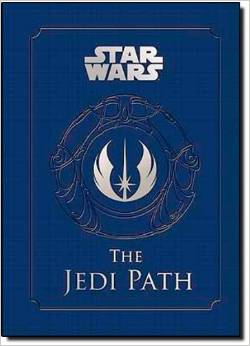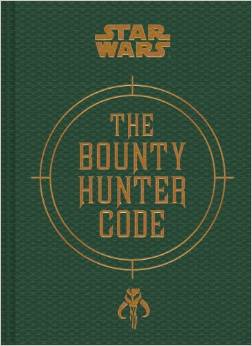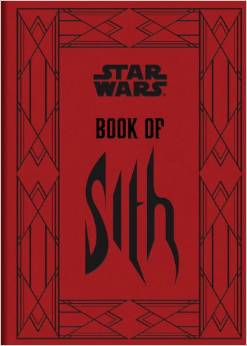This week, Yoda’s News very own Alex Rybak sat down for an interview with Star Wars legend, Dan Wallace. Wallace has authored several Star Wars books and is best known for his books The Jedi Path, The Book of Sith, The Bounty Hunters Code, and The Essential Atlas.
Alex Rybak: Mr. Wallace, first off thanks for taking the time to join Yoda’s News and talk about Star Wars. You have become very well known for your interesting work in Star Wars non-fiction. That is, non-fiction work that appears in the fictional realm of ‘Star Wars.’ You’ve written three so far: The Jedi Path, Book of Sith, and The Bounty Hunter Code. These are very unique books and are really revolutionary. What can you tell us about how these books were conceptualized? What was their inspiration?
Dan Wallace: You’re right that I seem to have carved out a small niche in the “fictional non-fiction” genre. But I do love it! In the case of Star Wars I started off as a writer on The Essential Guide to Planets and Moons, which was non-fiction but still had an in-universe perspective–no references to book titles, authors, that kind of thing. Over time, reference books became more immersive and that’s something I’ve really enjoyed. A book like Star Wars: The Essential Atlas is written as if it’s been downloaded from the Holonet, and contains snippets of in-universe fiction like excerpts from operas and celebrity biographies.

Image via Becker & Mayer
This trend has really blossomed with the Jedi Path/Book of Sith releases. They’re reference books, but kind of not? They’re written as if they’re diaries, or textbooks, or artifacts. A lot of that comes through in the packaging itself, which is designed to give readers the illusion that they are holding an actual relic from the galaxy far, far away in their hands. In that sense, the unsung heroes are the designers at Becker & Mayer who choose the distressed paper, the leathery bindings, and more. Rosanna Brockley deserves a lot of credit in their design.
As to how they started, the basic idea behind The Jedi Path was already in place by the time I was approached to work on it back in 2009. But once I came on board I helped flesh out the contents and the tone, trying to figure out how to write an authoritative Jedi textbook that would include info about everything from Padawans to Masters while not seeming too superficial.
And of course, the writings in the margins! That was hugely fun, to capture the school-kid voices of people like Dooku and Qui-Gon.
I don’t think a lot of people have seen it, but Lucasfilm had already published a very similar book by the time we started work on The Jedi Path. It was The Lost Journal of Indiana Jones. Also, J.K. Rowling had done something similar with Fantastic Beasts and Where to Find Them.

Image via Becker & Mayer
AR: All of your books feature just more than words on a page. They come with lots of “goodies” for fans, with innate housing units and multiple inserts from “previous owners.” What can you tell us about this process. How do you decided how to present each book and what types of artifacts will be included?
DW: The Deluxe Editions of The Jedi Path, Book of Sith, and The Bounty Hunter Code all come in mechanized, light-up cases that contain little souvenirs. What I’ve found is that a lot of Star Wars fans really love this type of packaging, and a lot of other fans just want to read the book without all the extras. Luckily we have editions published for both types of fans.
But with the Deluxe Editions it’s no longer just a book, it’s a box of collectibles. Part of the process of working on each book is to come up with a long list of items that we can include as removables. Sometimes these work, sometimes they don’t, and the reasons why they might get rejected could be due to cost, weight, or safety reasons. One of the things I suggested for Book of Sith was a small vial filled with a mysterious liquid that would be presented as a poison sample created through Sith Alchemy. I thought it was a good idea until becker&mayer pointed out to me that transporting strange liquids would open up a whole can of worms when dealing with international shipping.
There’s a general sense of wanting to get the inserts “right,” however. For Book of Sith, they’re sinister relics of potential power that Palpatine has been hoarding. For the Jedi Path they are more like mementos that a proud teenager would want to hold on to. And in the Bounty Hunter Code they’re items that Boba Fett might have been using at the time he fell into the Sarlacc — they’re less sentimental and more practical.

Image via Becker & Mayer
AR: What is your writing process like for writing books like these? Does it differ greatly than some of your other work, like The Essential Atlas or The New Essential Chronology?
DW: The biggest difference is trying to get in the head of the writer. Because these are all in-universe texts, there’s no generic, omniscient narrator, and in all cases I came up with a personality profile for the writer of each section. In The Jedi Path this meant coming up with a half-dozen ancient Jedi instructors and their quirks. For Book of Sith this was a little more front-and-center, since the book is a compilation of writings from Sith Masters like Darth Bane and Darth Plagueis. But even with The Bounty Hunter Code this principle was still in place. For the sections that I wrote, I envisioned an older, veteran bounty hunter who hated bureaucracy and loved to drink.
AR: Is there something specific about Star Wars that draws you in as a writer?
DW: Star Wars is pretty much my first love. Since grade school there hasn’t been a time when I wasn’t into Star Wars, and I’m pretty lucky that something I was so invested in as a fan became something I’m able to dabble in professionally.
I don’t precisely know what the secret sauce is with Star Wars, and why it’s so perennially popular. But I’m happy and amazed at all the kids who come to book signings and events dressed up as their favorite characters and able to answer the toughest trivia questions. Star Wars is a multi-generational phenomenon that keeps rolling on.
AR: Becker & Mayer recently announced your next project, The Imperial Handbook: A Commander’s Guide. What, if anything, can you share with us about this project? What can readers expect with this next installment in the growing number of interactive Star Wars books?

Image via Becker & Mayer
DW: The concept behind the Imperial Handbook is that it’s a manual distributed to newly-minted Imperial officers. Because those officers might come from the ranks of the Imperial Army, the Imperial Navy, or the Stormtrooper Corps, the book provides overviews of each branch of service so the reader is aware of their histories, structures, equipment, and strengths. There’s also a discussion about the Imperial regime and how it keeps order in the galaxy, and a classified section on Imperial superweapons and the principle of Rule by Fear.
It should be a fun read! Like the previous books in the series, the Imperial Handbook has handwritten comments in the margins, this time including Rebel military personnel like General Madine, General Rieekan, and Wedge Antilles.
AR: Well Dan, thanks again for joining us here at Yoda’s News to chat Star Wars. We appreciate you coming on and look forward to your future projects!
Dan Wallace has been a life-long comics book and science fiction fan and has authored over two dozen books. Some of his works, outside of Star Wars, include Man of Steel: Inside the Legendary World of Superman, DC Comics Year by Year, and the Iron Man Manual. All of his works are available for discounted prices on Amazon, here. You can follow Dan Wallace on Twitter at @danwall88. You can also follow Alex Rybak at @arybak89 and Yoda’s News at @YodasNews.

